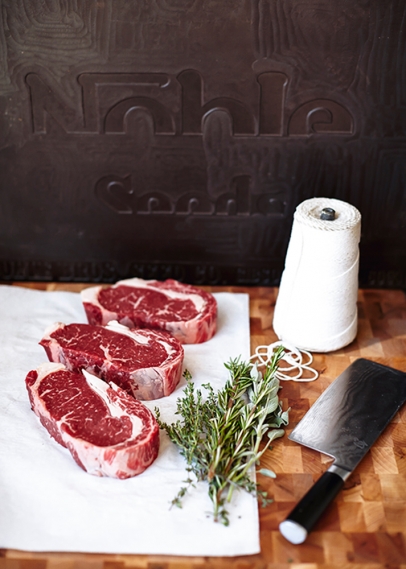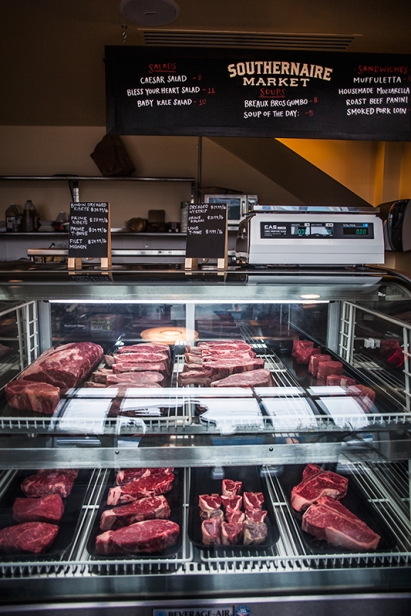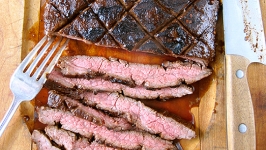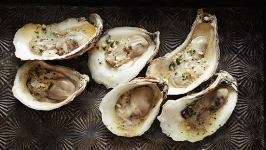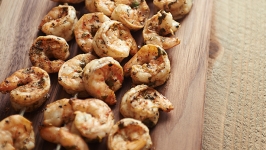Expert Grilling Tips from Southernaire's Jason Felts
May is glorious full-on spring in Nashville. The verdant green and cool temperatures beckon you to eat and cook outside. But before you fire up the grill and start the sizzle, you need a plan.Jason Felts, head butcher at the Southernaire Market in downtown’s SoBro district, has plenty of good ones. Visit him at the meat counter inside this New Orleans-style grocery and sandwich shop. He’ll be happy to help you pick that perfect steak or chop, as well as tell you how to make it sing on the grill.
He shares some of his grilling expertise with us.
Can you talk a little about the different grilling techniques and the cuts of meat you recommend for each?
Searing open flame: This direct heat technique (meaning the meat is directly over the heat) is best for small cuts, like steaks, lamb chops, or fish fillets. But it is also good for starting a large piece of meat such as pork shoulder, beef brisket or a thick steak. Say you want to cook a brisket. Place it first directly over the heat source and get significant caramelization on all sides. Then move it to a cooler place on the grill. Close the lid and finish it at a much lower temperature.
Slow and low heat: Briskets, pork shoulders and ribs are all best suited for this method. When you keep the meat away from the direct heat and close the lid, you are basically creating an oven. This retains moisture. Slow and low melts the fat into the meat of tougher cuts, making them very tender.
Wood smoked: For this indirect heat technique (meaning the meat is not directly over the heat), you start a fire with your desired wood. Whether it’s hickory, cherry, applewood, oak, each imparts distinct aromatics. Place the food at opposite ends or side of the grill and close the lid, cutting off the oxygen to the fire. The fire should smolder and generate smoke.
Large cuts of meat such as brisket or pork shoulder can smoke for up to 24 hours or more, whereas fish, chicken, cheese, oysters or vegetables are smoked for much less time.
Charcoal fired: When you are cooking over charcoal, the heat source can be either direct or indirect. By strategically spreading the charcoal out in certain parts of your grill, you can create hot spots to cook with direct heat (burgers, sausage, chicken breasts, fish, etc..) or indirect heat (brisket, ribs etc..) for slower cook times.
In seasoning the meats, do you recommend before or after grill time? Tell us about the benefits of marinades, dry rubs, and sauces, and how to best use these condiments to enhance the meats.
I always season steaks just before cooking, with simple kosher salt and pepper. But for cuts that require long cook times, such as ribs, briskets, and pork butts, I think that dry rubs are excellent.
I like marinades for secondary cuts such as hangar, skirt and flank steaks. They not only add flavor but help to tenderize the meats. I think sauce is very subjective. But a good one can add flavor and moisture to meats and vegetables. At the market, we have a line of signature sauces--Texas Ketchup, Blackberry BBQ, Peace and Plenty, Southerner’s Revenge–that will kick up your meats or fish.
The array of prime cuts at Southernaire is striking, beautifully marbled rib eyes, filets, t-bones, and lamb chops. Who are your sources?
We source a lot of the cuts from Michael’s Finer Meats out of Columbus, Ohio. They have relationships with a select group of small packers in the Midwest. We also work locally with Bear Creek Farms in Leipers Fork, TN. We get dry-aged bone-in ribeye, dry aged strip steaks, and ground beef from them. Occasionally we will have pork shoulder, bellies and other pork products too.
Do you have a personal favorite and why?
My favorite cut is the dry-aged strip steak from Michael’s Finer Meats. I prefer the flavor of dry-aged beef—it’s more concentrated. And, the marbling is incredible---perfect for grilling.
You also offer fresh oysters and shrimp. Could you share some tips for roasting oysters or smoking shrimp on the grill?
We offer many varieties of great oysters from many regions. My favorite way to prepare grilled oysters is to make a compound butter with fresh herbs, salt, pepper, lemon and plenty of garlic. I put 2 teaspoons on each oyster and place them on the grill. You cook them just until the butter is melted and the oysters start to bubble around the edges. This only takes 2 -3 minutes. Do not overcook!
I like to marinate large shrimp with garlic, lime, chili powder, ground cumin, coriander, cilantro and olive oil. Season with salt and pepper and place in a smoker. They will turn bright pink in a short period of time—under 20 minutes, depending on the heat of the smoker. Start checking them after 10 minutes—you don’t want them to overcook and dry out.
Four Great Grilling Recipes
Flank Steak with Cocoa Chili Espresso Rub
Grilled Oysters with Compound Herb Butter
Grilled Shrimp with Cilantro-Lime Marinade
Rosemary Grilled Lamb Chops
Images courtesy of Southernaire Market.


